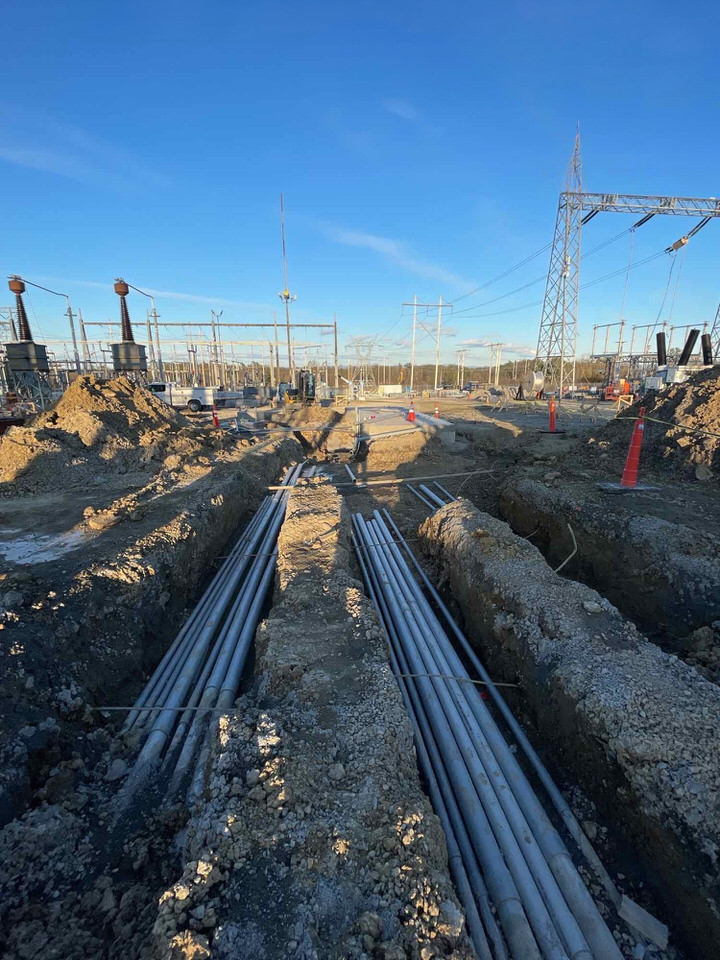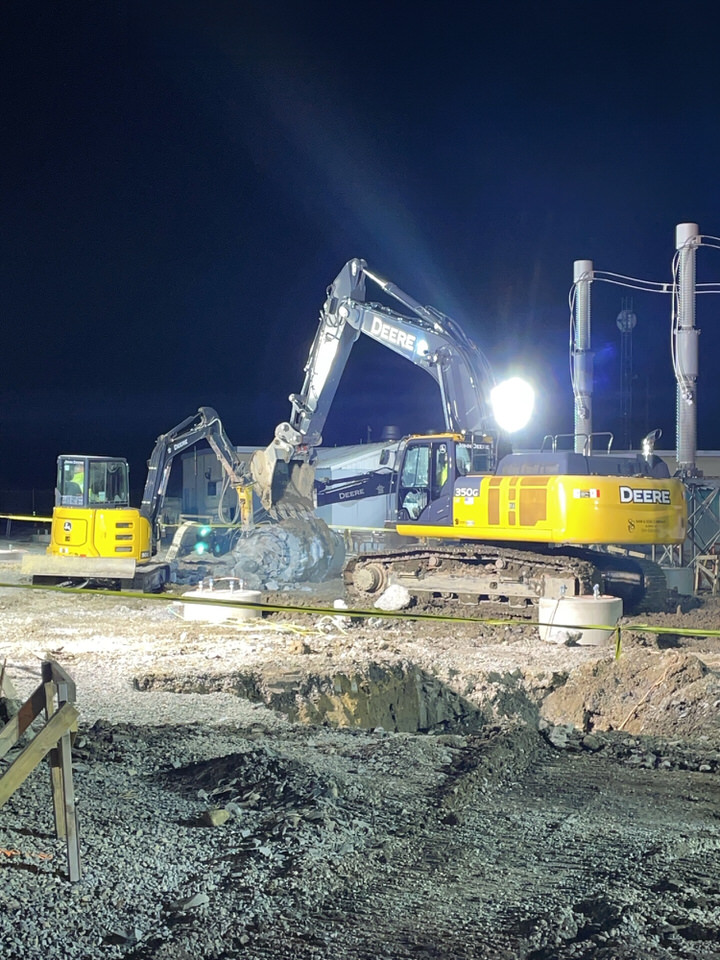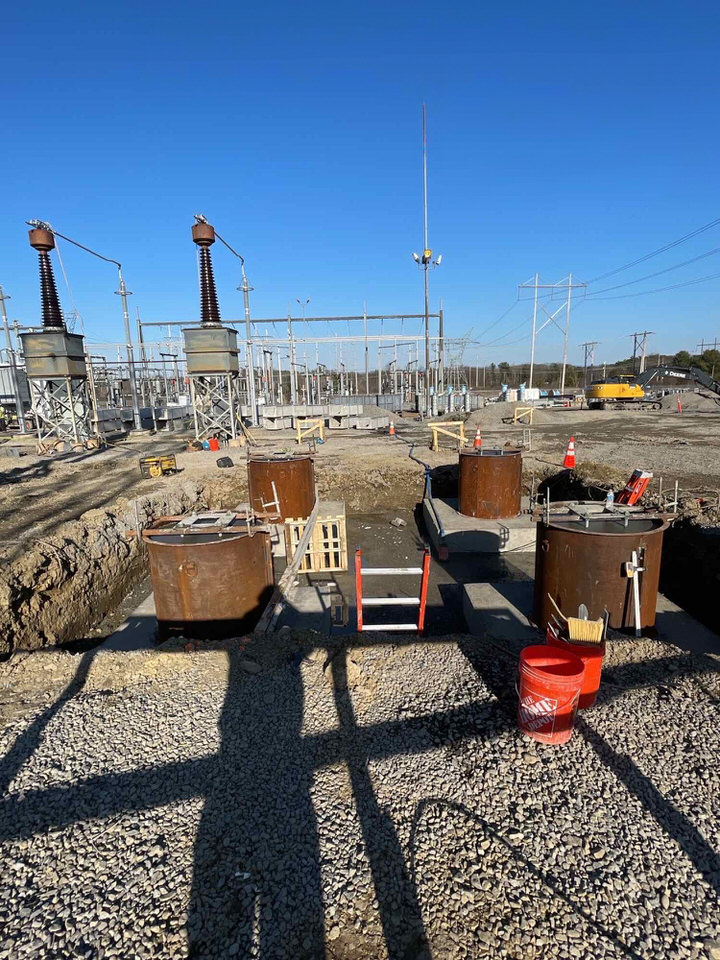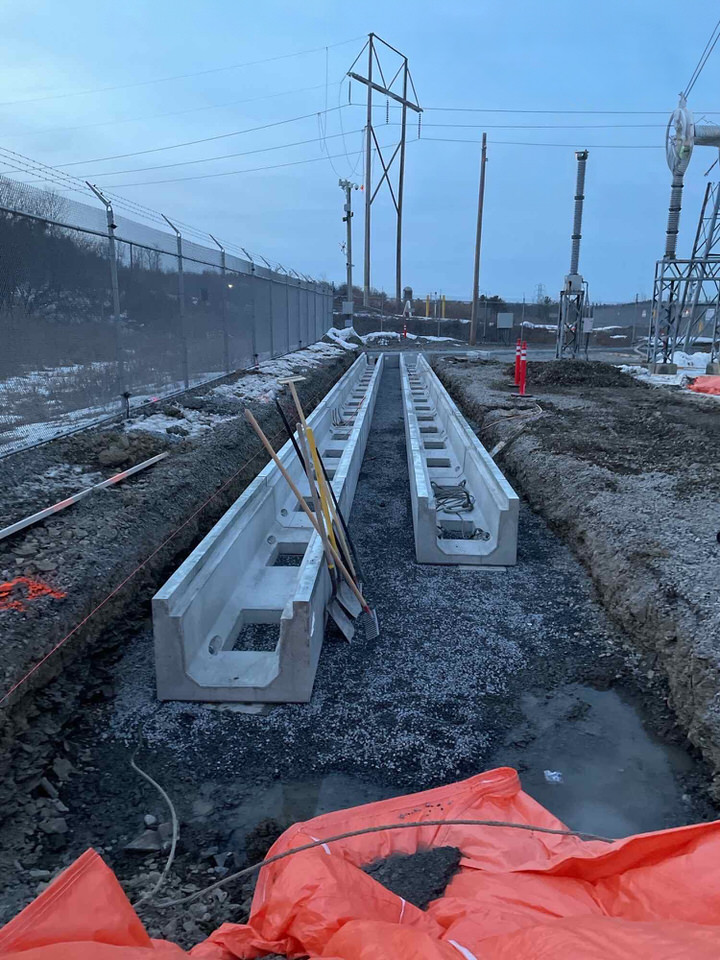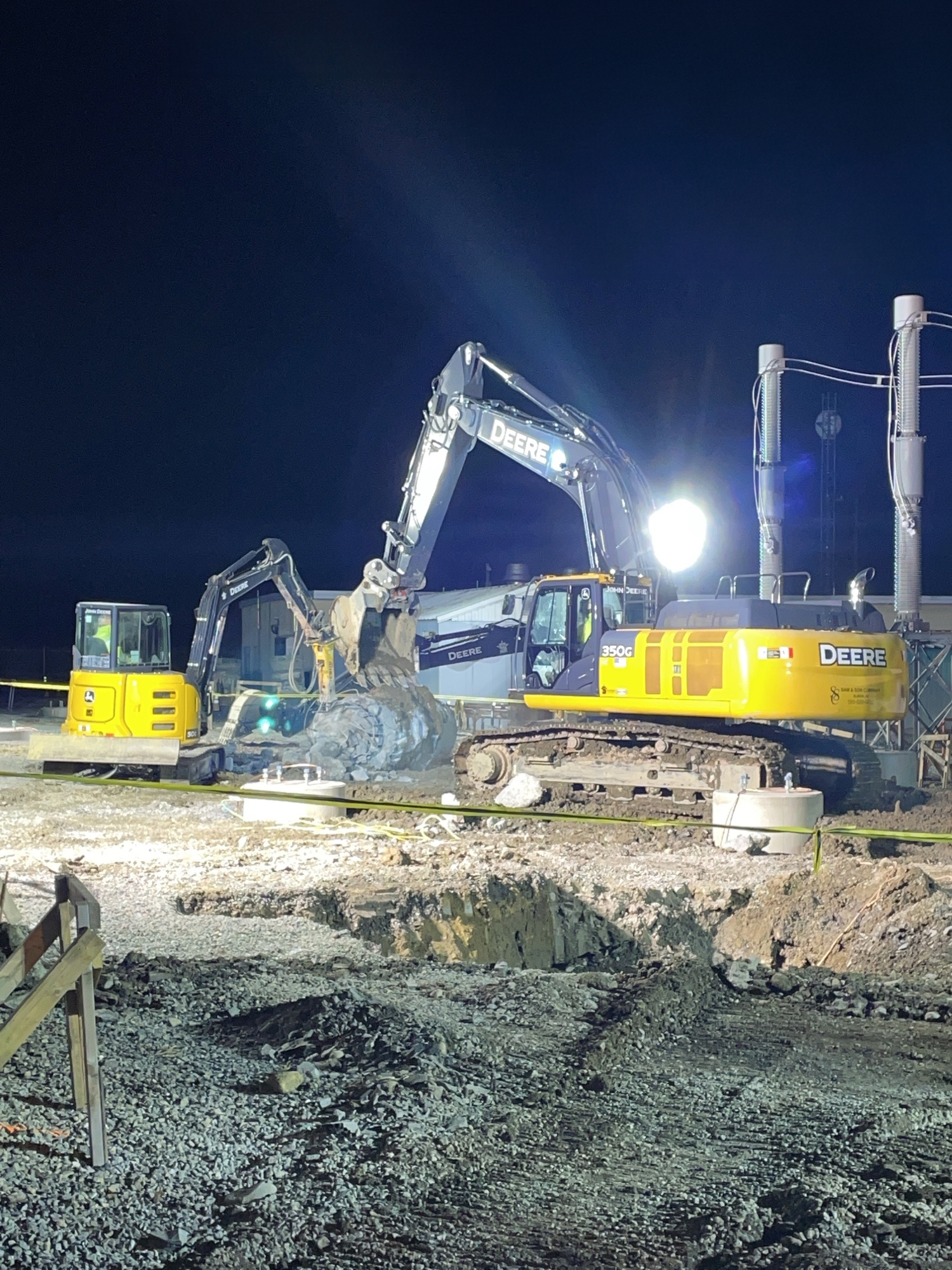
New Scotland Project
The New Scotland project was an electrical upgrade project of an existing National Grid 345kv to 115kv substation in the Albany NY region. The substation was reconfigured to support two new Princetown to New Scotland 345kv lines. Requiring the installation of new concrete spread footers, drilled piers, cable trench and new transmission interconnect foundations.
Challenges:
Outage Window
This project had 3 major outage windows in which considerable work was required in order to meet the customers demands. Two of the three outage windows were roughly 1 month durations. During this time existing gear had to be removed, foundations demolished, new foundations installed, new structures/gear installed and tested prior to energization. Both Sam and Son and O’Connell had multiple crews working up to 14 hour days 7 days a week in order to complete the work.
Time of Year
In order to prepare for the outages a new double wide cable trench system had to be installed from the existing control building around the perimeter to the new bay to accommodate the new underground conduits and cables. This work was conducted in the winter months where frost had reached depths of two feet. Sam and Son ran two ground thaw units around the clock staying ahead of the excavation crews to ensure that excavation through the live yard could be done via hand digging when crossing existing utilities that had to remain in service.
Existing Infrastructure Tie-In
During construction of the new 345kv bay it was discovered that the existing switches didn’t line up with the proposed centerlines of the new foundations. Sam and Son worked with O’Connell Electric to help find where there were discrepancies via transits and aerial measurements to help engineering come up with a solution in short order due to the stringent outage windows.
HIGHLIGHTS
- Sam and Son was able to maintain traffic and ensure that all areas of the campus were still accessible due to the way we constructed the project through phases.
- Restoration of campus features to meet current code compliances that were previously installed and not NYS code compliant.

